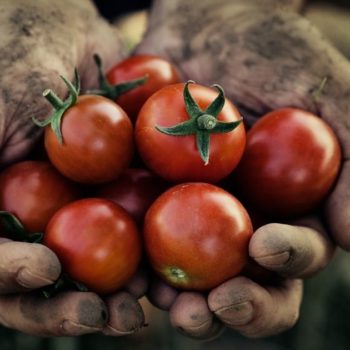
What is Hydroponics?
Hydroponics is a method of growing plants using a nutrient solution instead of traditional soil. In hydroponics, plants are grown in an inert medium such as rock wool or coco coir fiber to support the root structure and fed a water-based solution containing a perfecte mix of primary, secondary and micro-nutrients.
Why Grow Hydroponically?
· The main benefit of growing hydroponically is bigger and higher yields!
When growing in traditional soil, plants use a significant amount of energy to grow an extensive root structure to find and extract nutrients from the soil. In a hydroponic system, plants can focus its energy on maximizing yield instead of root structures because the water, oxygen, and nutrients are readily available. Typically, hydroponic plants have smaller roots, which allow for more plants in the same amount of space.
· Hydroponic growing allows a clean and controlled environment.
A hydroponic system gives full control of what plants consume, how much of it and at what time and frequency. Factors such as pH levels can be easily adjusted and manipulated. Eliminating the use of soil in growing also creates a cleaner environment which reduces the risk of pests and diseases that thrive in soil environments.
· There is no seasonality in hydroponic growing.
Since hydroponic growing is typically done indoors, growers can maintain plants all year round instead of being limited to specific seasons each year.
What Are the Disadvantage of Hydroponic Growing?
· The greatest disadvantages of hydroponic growing are the costs and time associated with it.
Hydroponic growing is expensive to set up and maintain, especially if it’s a large automated system. Once the system is set up, it needs to be constantly monitored to ensure that the plants are growing in the most optimal conditions.
· Hydroponic growing can be risky.
If anything within the system fails to provide the necessary supply of water, oxygen, and nutrients, plants will suffer almost immediately. A hydroponic system does not have the ability to store water, nutrients, and oxygen like traditional soil can.
What Are the Different Methods of Hydroponic Growing?
There are many different methods available to grow hydroponically, such as: DEEP WATER CULTURE (DWC): roots are suspended in the nutrient solution with an air pump that provides oxygen and prevents the roots from drowning. ADVANTAGES DISADVANTAGES NUTRIENT FILM TECHNIQUE (NFT): a slightly tilted channel allows a continuous flow of nutrient solution to run over plant roots, but roots are not completely submerged. ADVANTAGES DISADVANTAGES AEROPONICS: roots suspended in the air are constantly or periodically misted with the nutrient solution. ADVANTAGES DISADVANTAGES EBB & FLOW/FLOOD & DRAIN: roots are flooded with the nutrient solution at specified time intervals after which the nutrient solution drains away leaving the roots exposed to air. ADVANTAGES DISADVANTAGES



DRIP SYSTEM: provides a slow feed of the nutrient solution through the growing medium to the roots.

ADVANTAGES
- Provides an elevated level of control over feed and watering
- Relatively inexpensive and stable set up
DISADVANTAGES
- May experience clogging in line from nutrient particle build up
- Does not use inputs efficiently – high waste emitted
Here’s a short video on how to create a simple hydroponic system at home:
- On November 27, 2019


